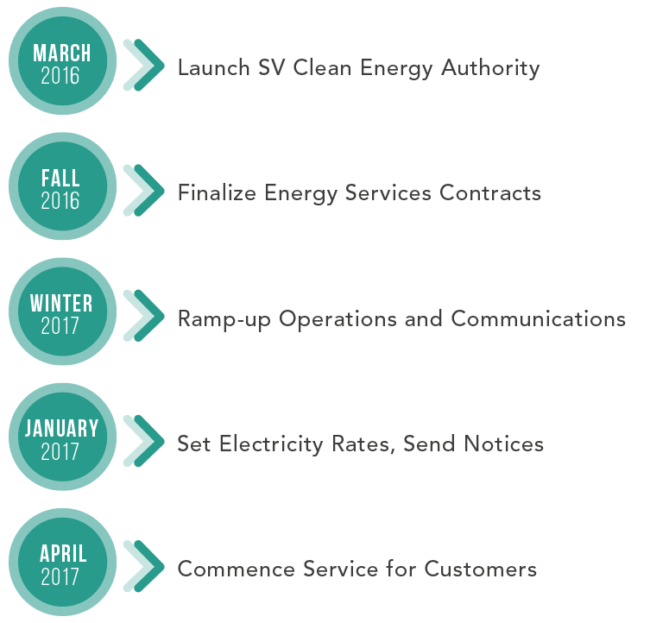The Agency
Motivated by a common interest in taking bold and effective climate action, twelve Santa Clara County communities came together in March 2016 to form Silicon Valley Clean Energy (SVCE), a new Community Choice Energy agency. As a public agency, SVCE is chartered to source clean, competitively-priced electricity on behalf of residents and businesses in the participating jurisdictions of Campbell, Cupertino, Gilroy, Los Altos, Los Altos Hills, Los Gatos, Milpitas, Monte Sereno, Morgan Hill, Mountain View, Saratoga, Sunnyvale and unincorporated parts of Santa Clara County.
SVCE sources carbon-free electricity, at a lower cost – allowing our communities to make large-scale reductions in emissions, while saving residents and businesses money at the same time. In addition, SVCE will advance programs for efficiency, demand management and fuel switching – to clean, carbon-free electricity in the place of fossil fuels used in transportation, buildings and infrastructure.
SVCE maintains a full-time staff, and is governed by a public Board of Directors comprised of an elected official from each member community. Member communities also designate a board alternate.
By law, the agency is funded through program revenues only, not local government budgets. All revenues are returned to the program and passed on to customers in the form of reduced rates, local clean energy projects and customer programs.
Our History
Prior to the formation of SVCE in March 2016, the Silicon Valley Community Choice Energy Partnership was sponsored by the cities of Sunnyvale, Cupertino and Mountain View, and the County of Santa Clara (unincorporated county areas).
This Partnership produced an Initial Assessment Report that analyzed the risks and benefits of launching a local Community Choice Energy (CCE) program and explored which other communities would participate. Based on this introductory effort, the sponsoring agencies decided to proceed with a full Technical Feasibility Study that focused on the energy needs of our communities and explored potential rates for a local CCE program. The results determined that a CCE program would be both financially viable and help local communities meet their climate action goals. Subsequently, eight additional communities decided to join with the four initial sponsors to form a new joint public agency that would bring the benefits of a locally run non-profit electricity provider to Silicon Valley.
Our Path to Offering Service

About Community Choice Energy
SVCE is a Community Choice Energy (CCE) program. Enabled through state legislation (AB 117, 2002 and SB 790, 2011), communities can form a Joint Powers Authority to pool the electricity demand of residents and businesses to buy power on their behalf and with their interests in mind. The public, not-for-profit agency buys clean power on the open market, increasing net clean energy demand and spurring development of clean energy supplies and lowering costs.
When a community decides to create or join a CCE program, all customers within that jurisdiction are automatically enrolled. However, customers can choose to opt out and remain with, or go back, to PG&E. Across existing programs, more than 90% of customers have chosen to stay with the new local agency as their electricity provider, opting for the cleaner, greener, local choice. For SVCE, nearly 97% of eligible customers have remained in the program.
Under SVCE, PG&E continues to provide essential services as a partner, delivering electricity over existing infrastructure, maintaining power lines, sending bills and providing customer service.
Other Community Choice Energy Programs
Silicon Valley Clean Energy works closely with the other Community Choice Energy agencies now operating in the Bay Area and throughout California. Some of the first CCEs include MCE Clean Energy (MCE), which has been successfully operating since 2010, serving Marin, Napa, Benicia and parts of Contra Costa County. Sonoma Clean Power (SCP) began service in 2014 and serves Sonoma and Mendocino counties. Both CleanPowerSF and Peninsula Clean Energy began service in 2016.
If you do not live in SVCE’s service area, here are our fellow Bay Area Community Choice agencies:
- CleanPowerSF
- East Bay Community Energy
- MCE Clean Energy
- Monterey Bay Community Power
- Peninsula Clean Energy
- San Jose Clean Energy
- Sonoma Clean Power
Many local governments throughout California have started the process of forming CCE agencies, including: Los Angeles and Ventura Counties, Riverside, City of San Diego and Santa Barbara counties. Learn more about the impact of Community Choice Energy in California by visiting the California Community Choice Association.


